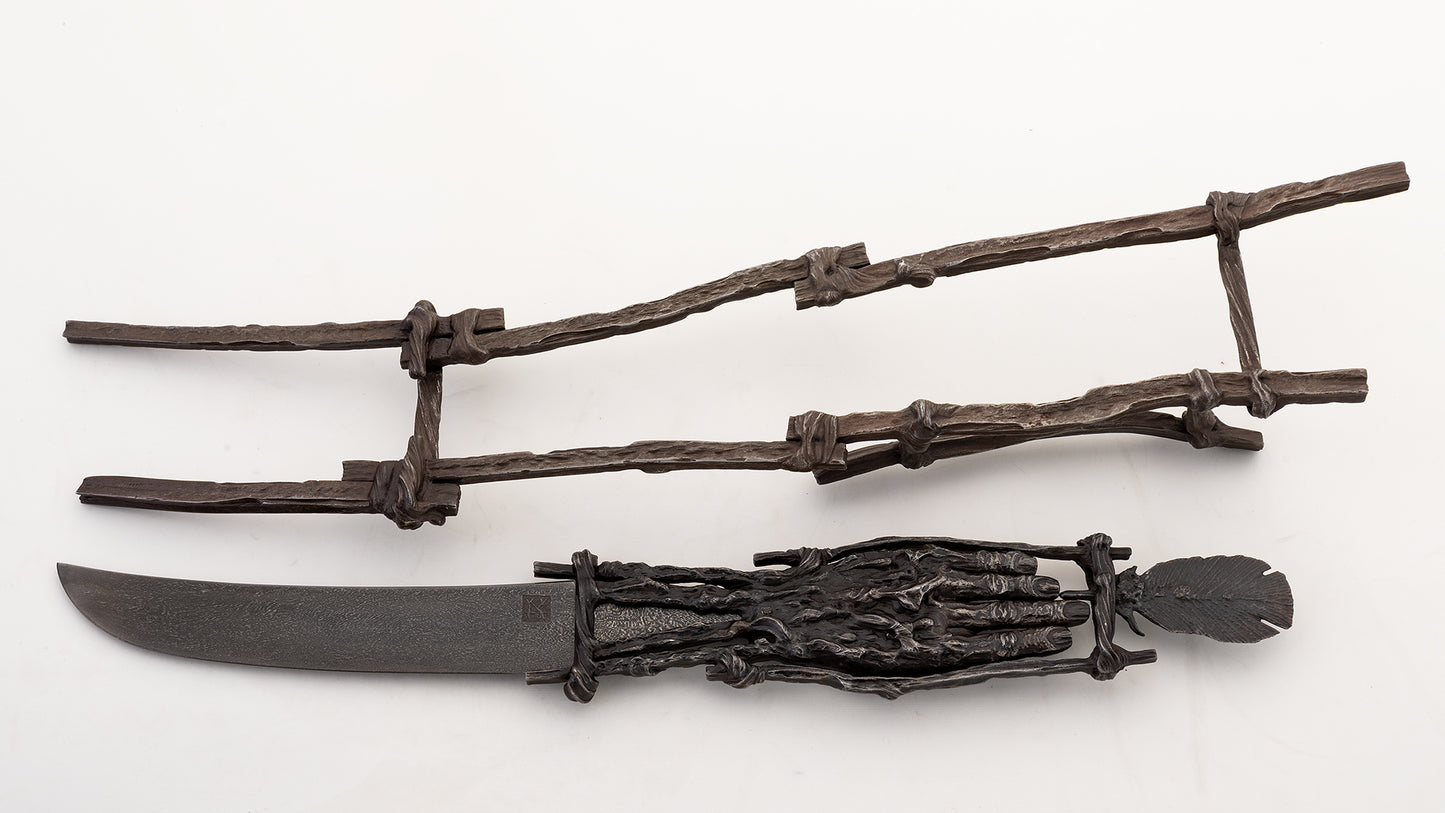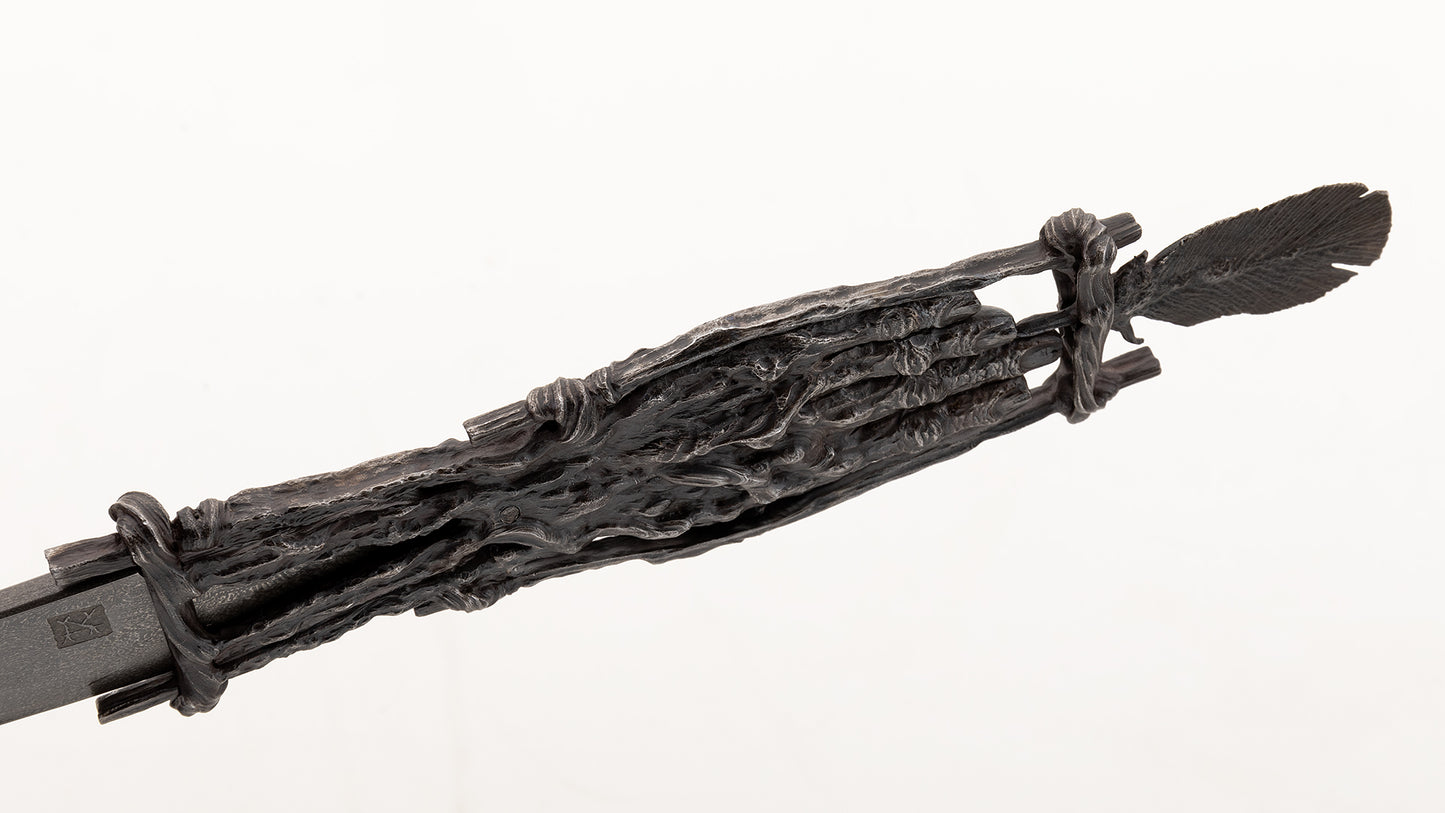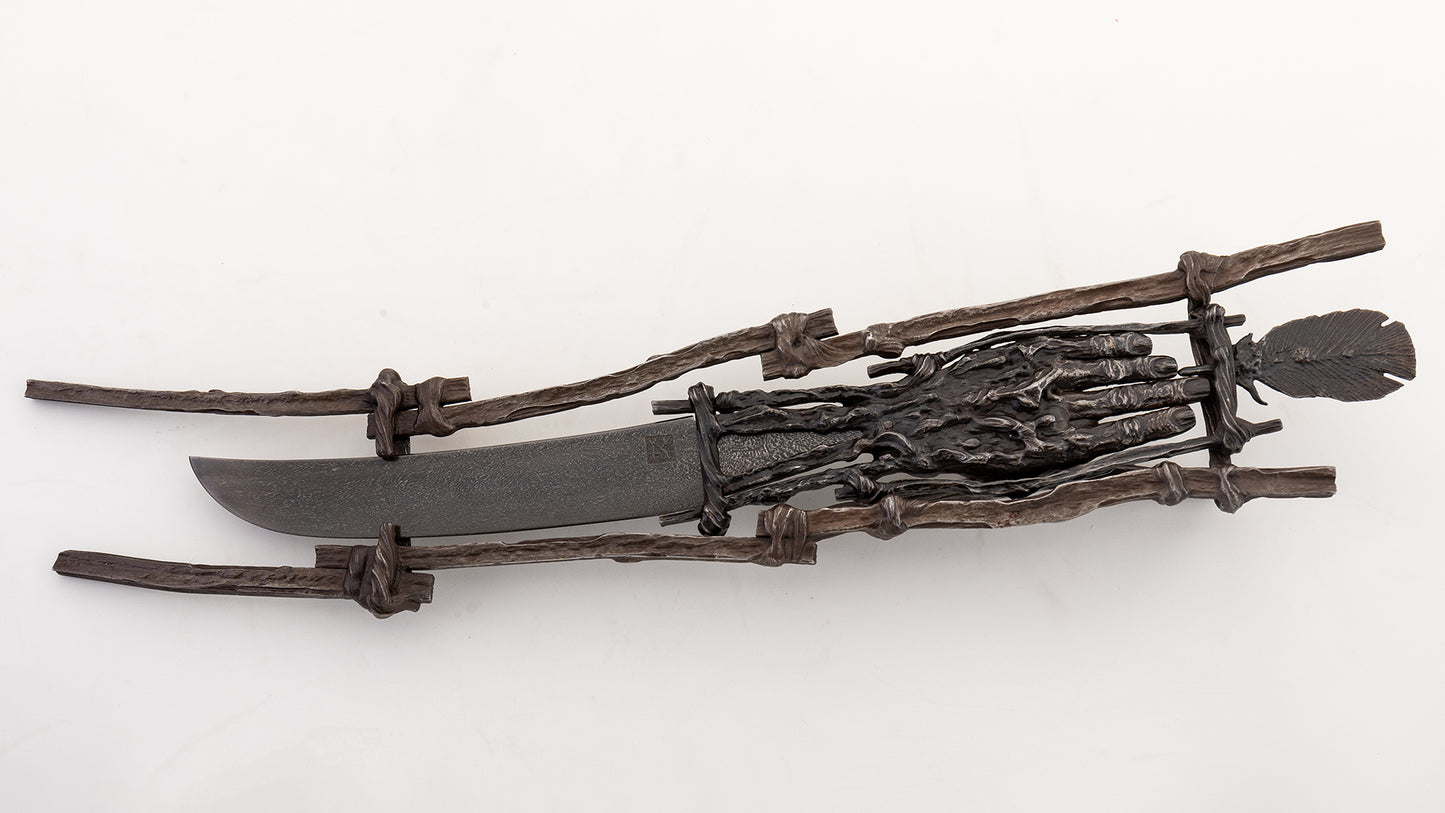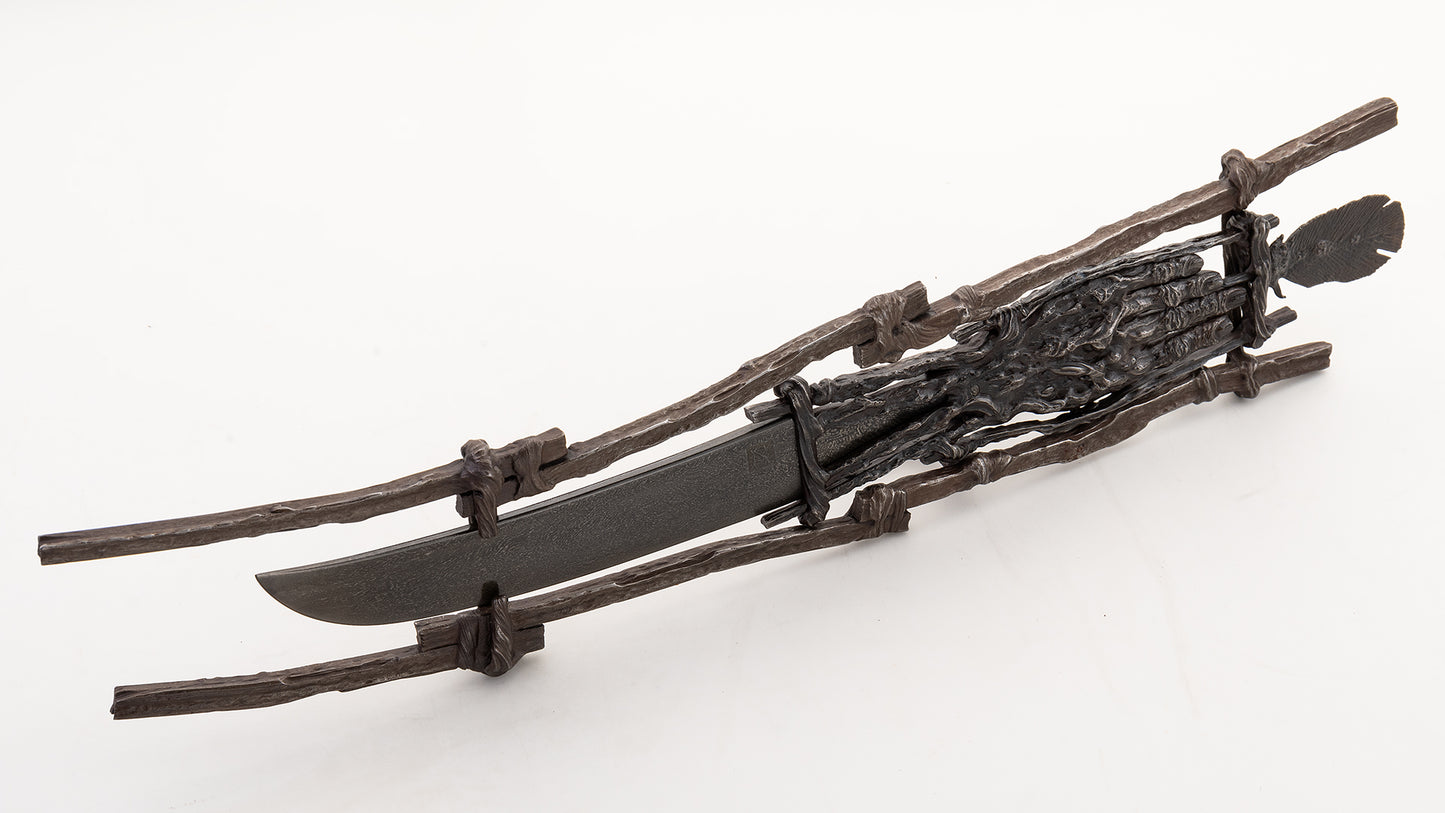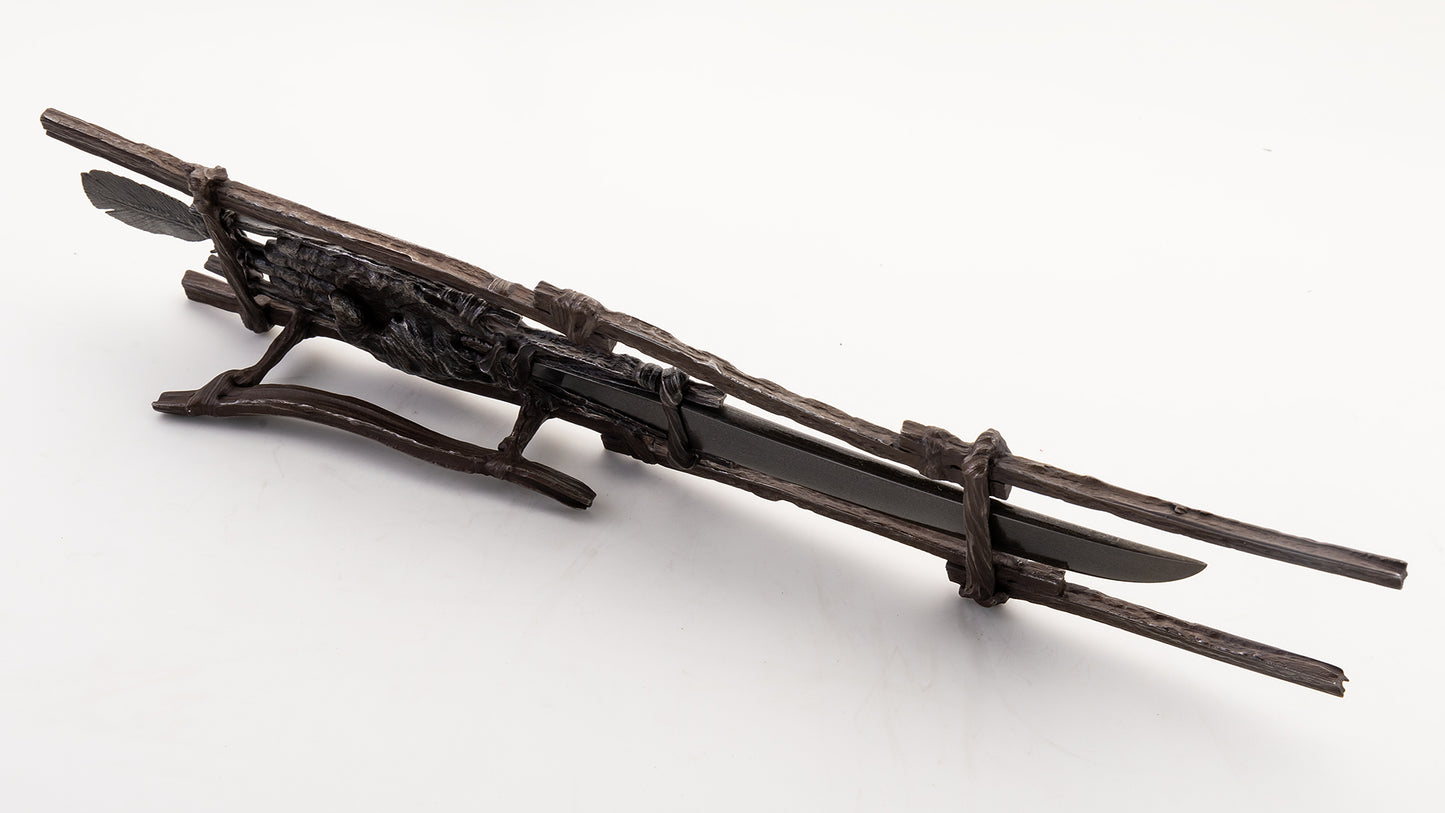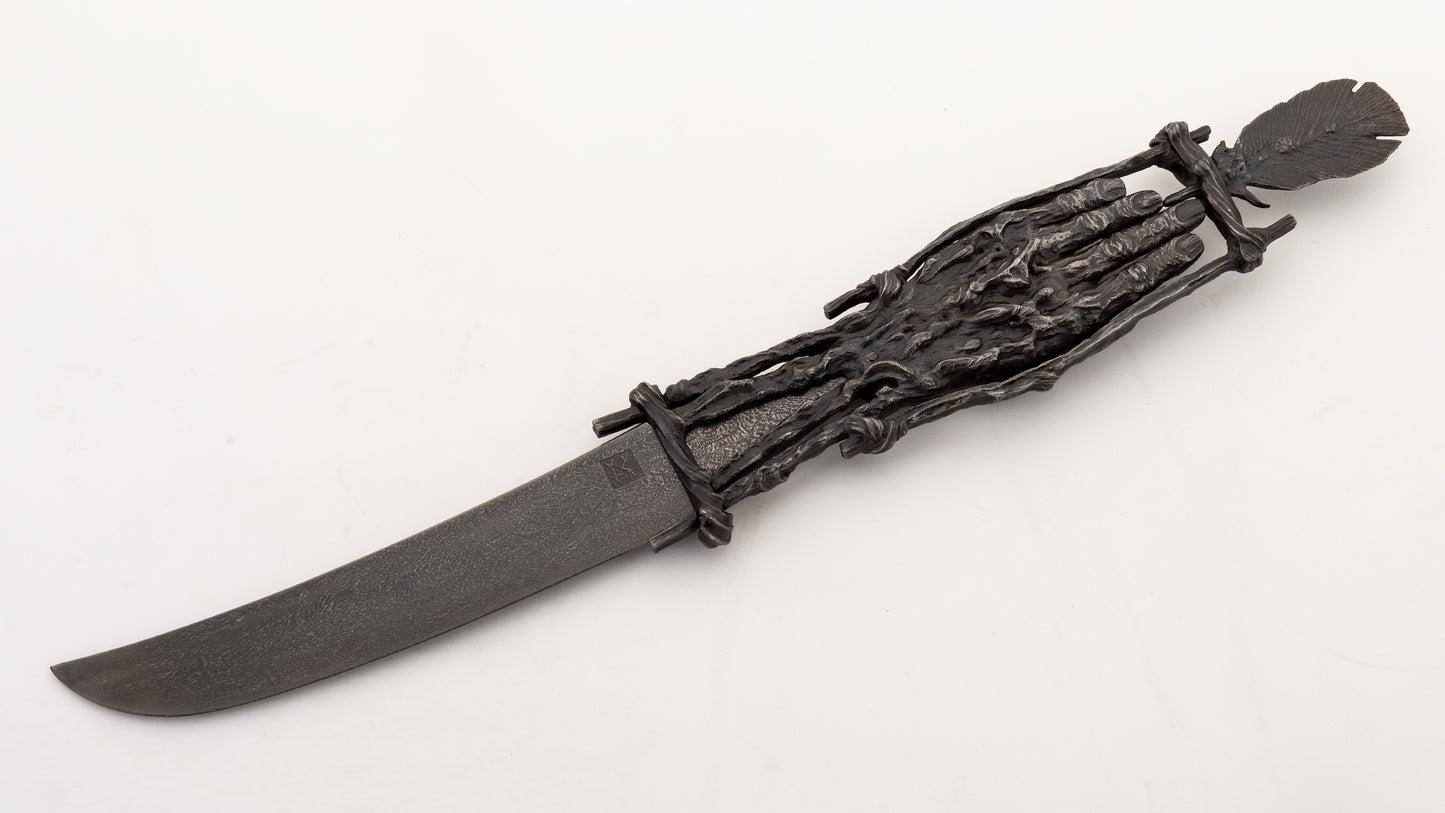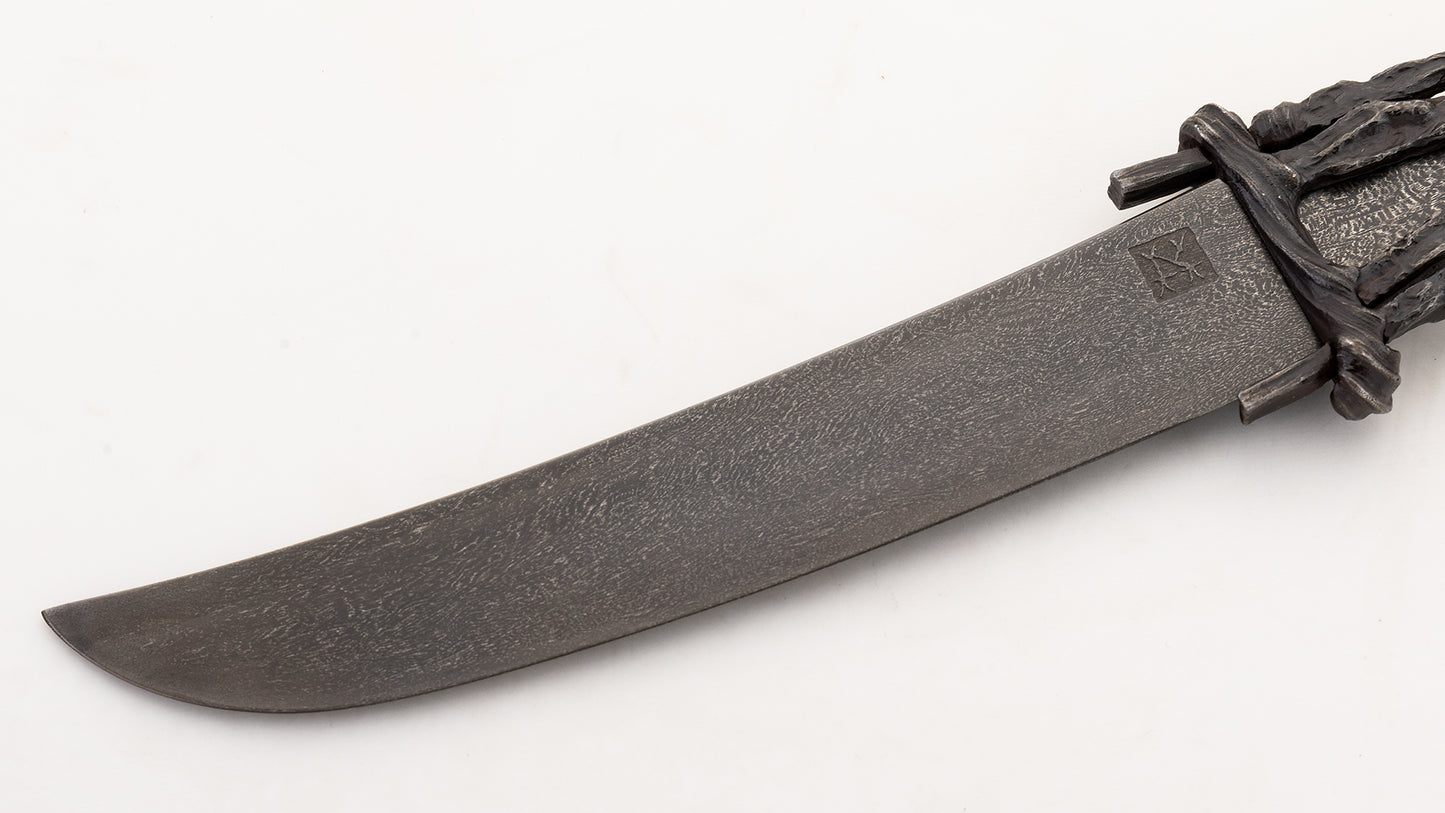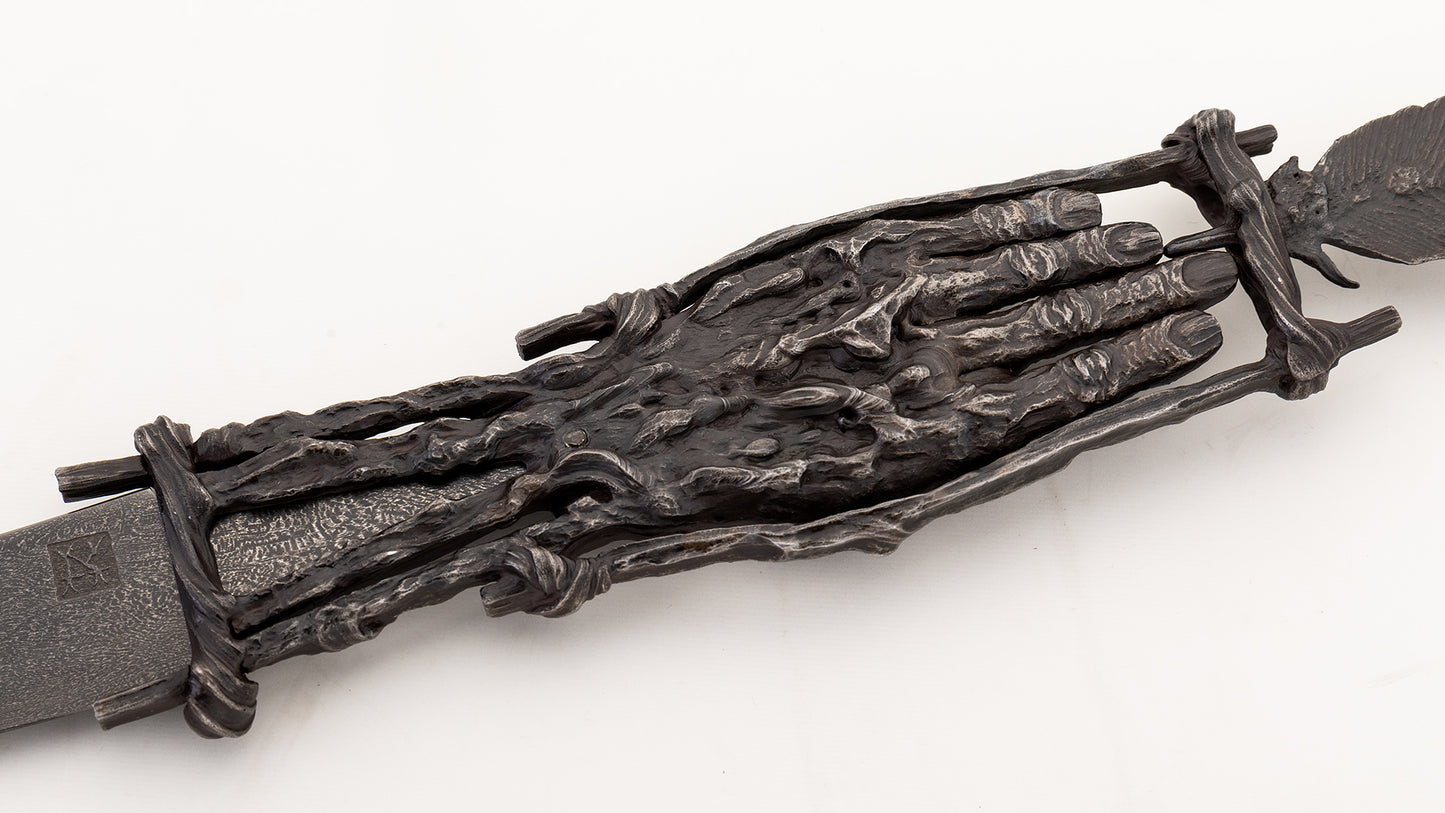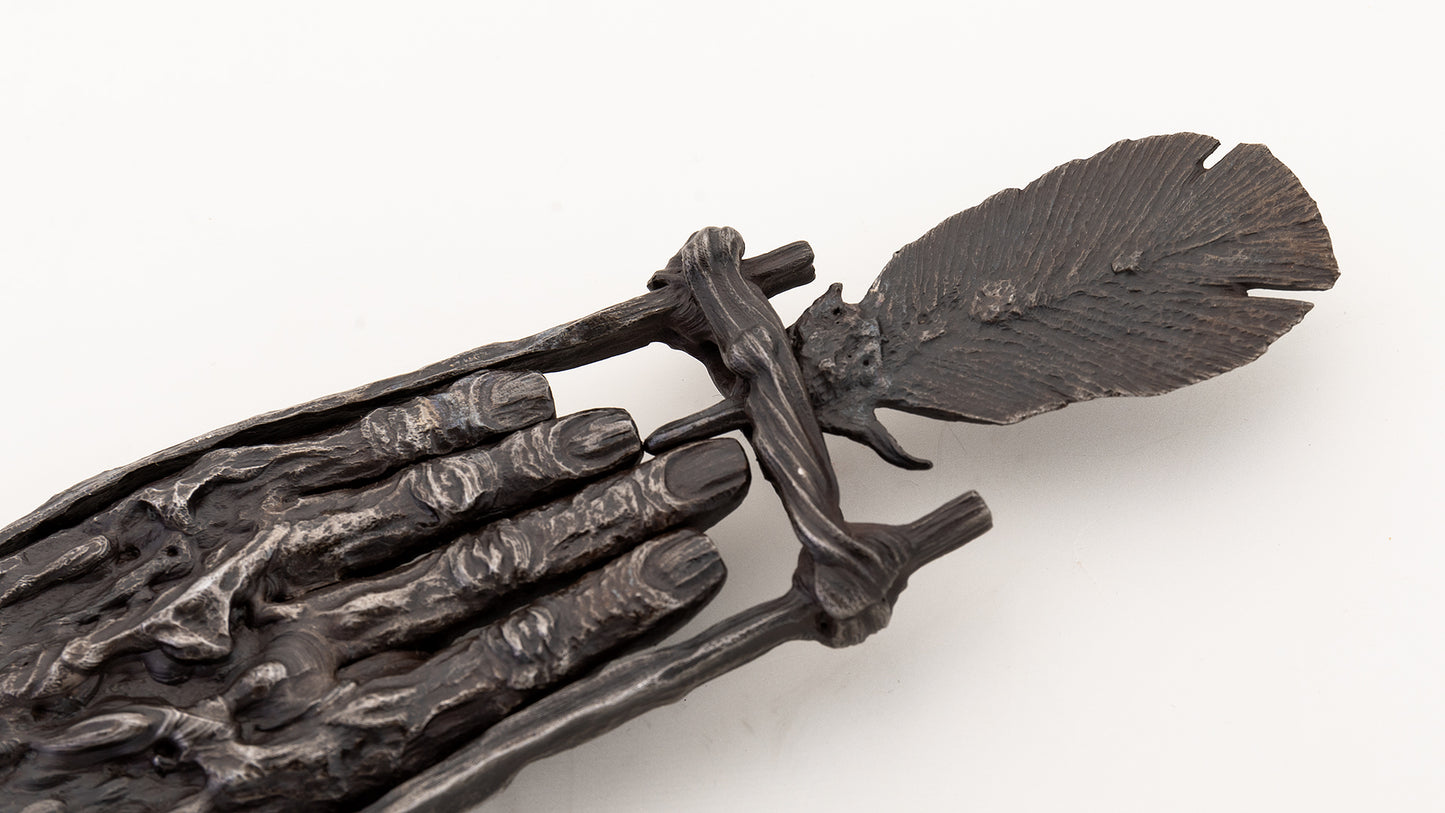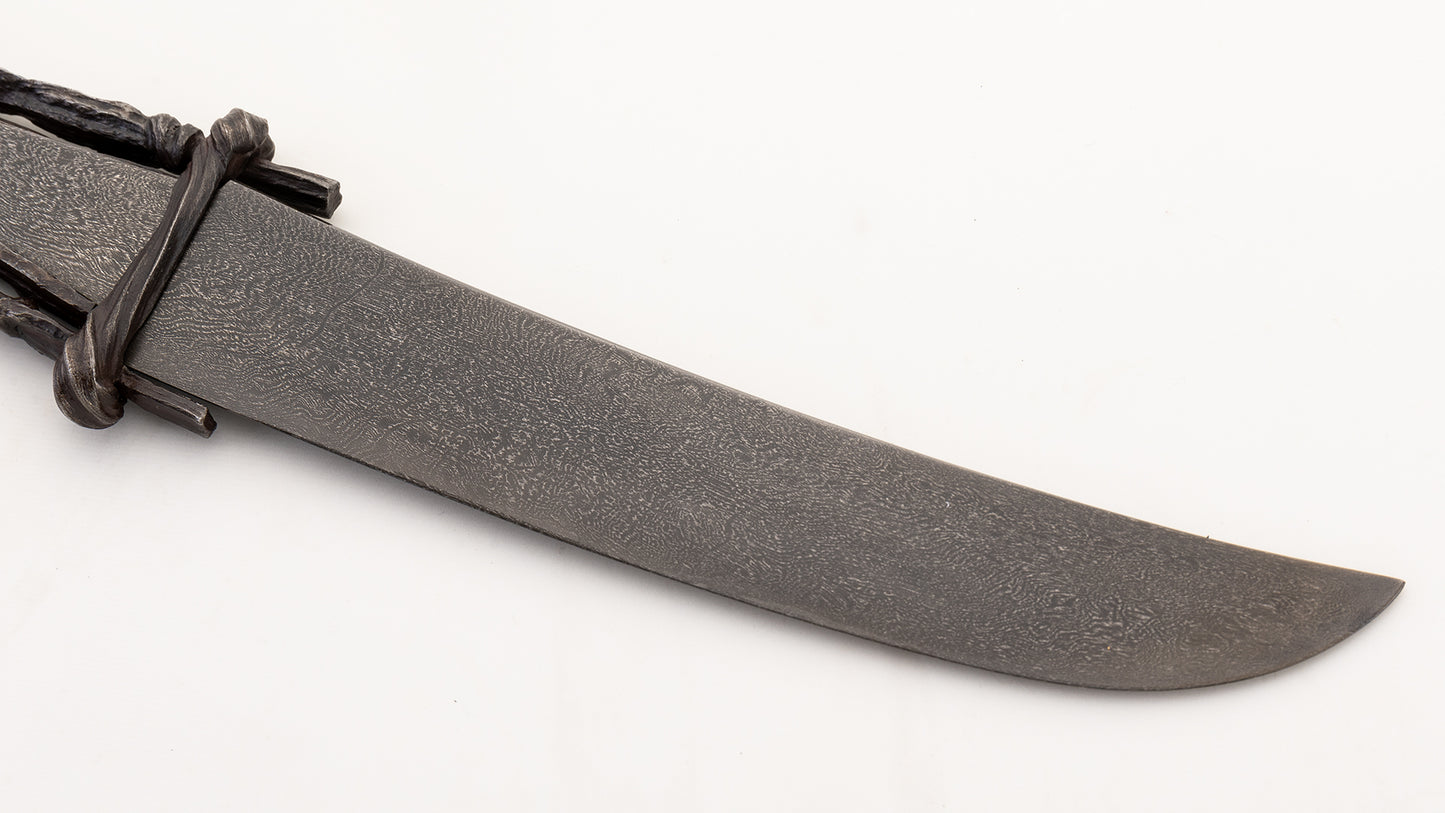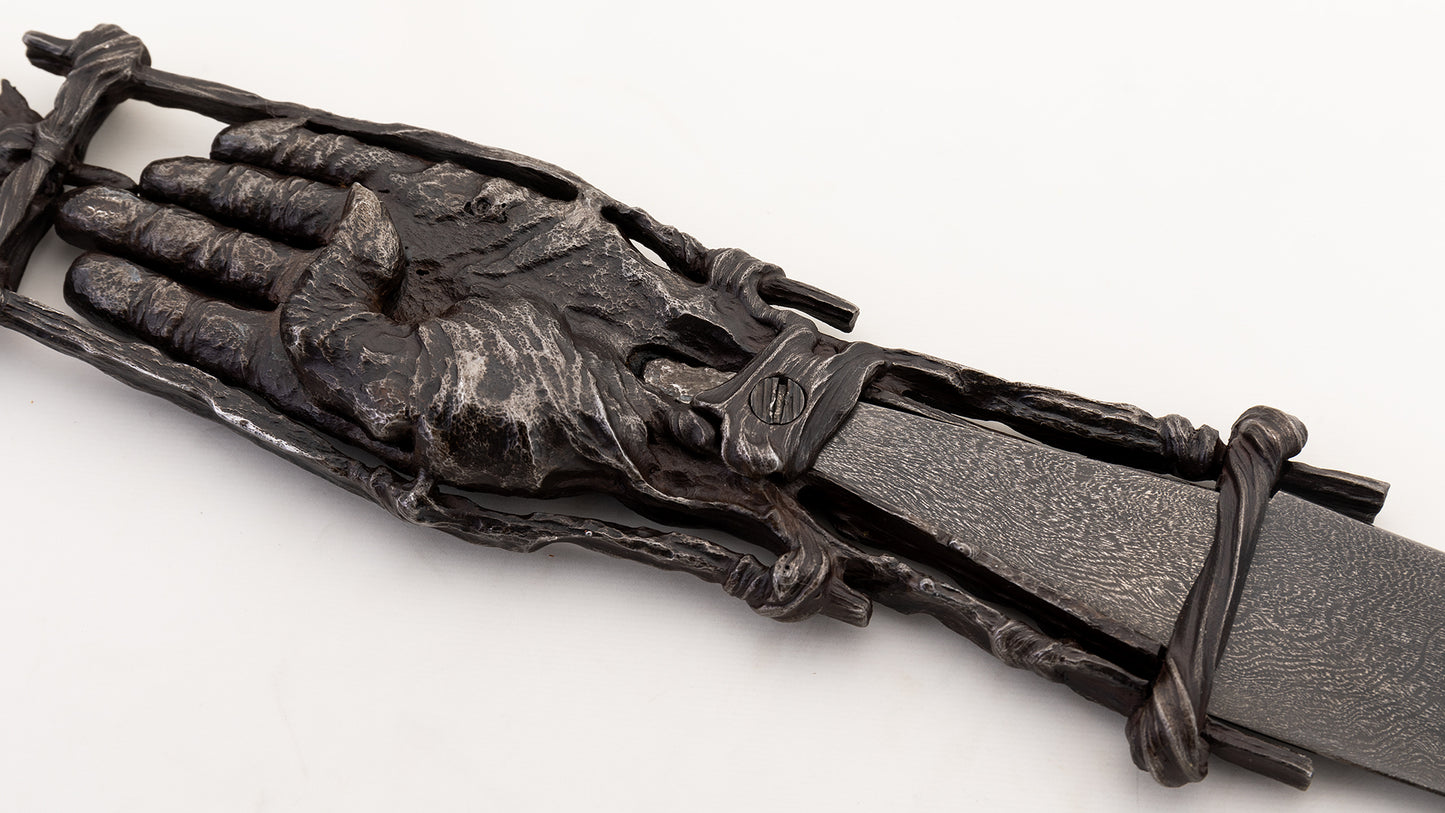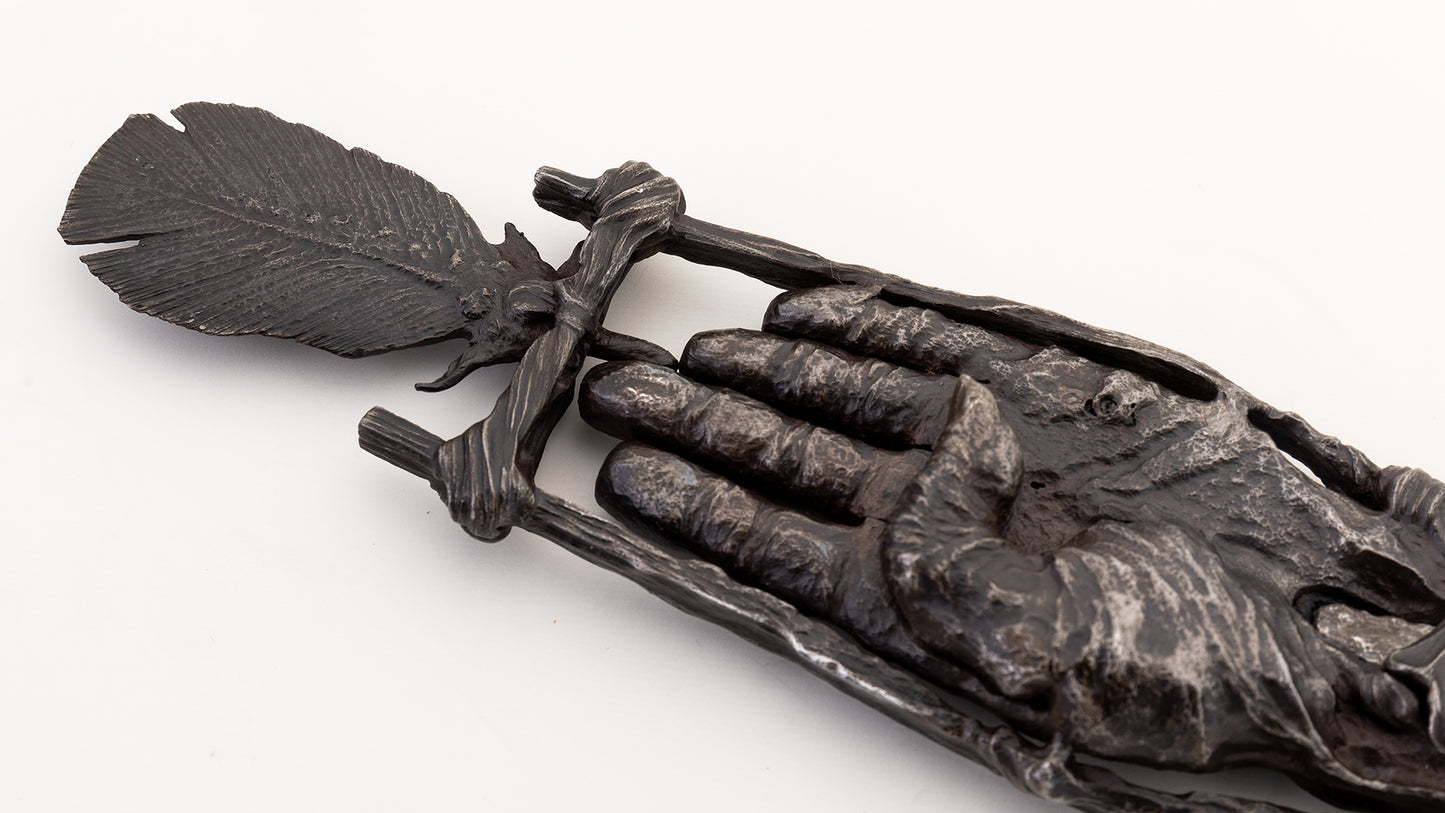Knife100
The Fall of Icarus - Andrei Kuxin and Alexander Kuxin
The Fall of Icarus - Andrei Kuxin and Alexander Kuxin
Couldn't load pickup availability
The Fall of Icarus: A Monumental Testament to the Human Spirit, Forged by Russian Masters
- Maker: Andrei Kuxin and Alexander Kuxin
- Overall Length: Knife: 31cm / 12.2in Everything: 35cm / 13.8in
- Blade: Wootz Steel
- Guard and Handle: Stunning Combination of Smelted, Welded, and Carved Steel to Flow with the Story.
Descend into the depths of ancient myth and human longing with "The Fall of Icarus," an awe-inspiring sculpture forged over a year by the acclaimed Russian art knife masters, Andrei and Alexander Kuxin. This monumental piece, a testament to the Kuxin brothers' unparalleled skill and artistic vision. Much of their work graces the hallowed halls of the Hermitage Armory Museum, solidifying their status as national treasures.
- Echoes of Ancient Tragedy: "The Fall of Icarus" captures the heart-wrenching climax of the Greek myth. Icarus, son of the ingenious Daedalus, plummets towards his demise, his wings—a symbol of both liberation and hubris—reduced to scattered fragments. The sculpture's weathered hand, etched with the lines of a life lived in captivity, reaches desperately towards the sky, embodying the unyielding human thirst for freedom.The weathered hands are full of wrinkles, reflecting the painful experience of the family being imprisoned on the island, while the resolute open posture of the palm shows Icarus’s desire for freedom. The longing, the broken wreckage of the aircraft and the only remaining feather tell the tragic story of the crash.
- A Fusion of Tradition and Innovation: The Kuxin brothers, renowned for their mastery of metalworking, have employed a symphony of techniques—smelting, forging, welding, and carving—to bring this tragic scene to life. The blade, meticulously crafted from legendary wootz steel, shimmers with an ethereal glow, a haunting reminder of Icarus's fiery descent.
- A Symbol of Human Aspiration: "The Fall of Icarus" transcends the boundaries of mere sculpture, serving as a powerful metaphor for the human spirit's boundless aspirations and the inherent risks of reaching for the unattainable. It is a monument to the enduring power of myth and the timeless struggle between ambition and mortality.
- A Masterwork of Artistic Legacy: This sculpture stands as a milestone in the Kuxin brothers' illustrious career, showcasing their mastery of both technical skill and emotional depth. "The Fall of Icarus" is more than just an art piece; it is a testament to the enduring power of storytelling, a testament to the resilience of the human spirit, and a testament to the transformative power of art.
- The Story: "The Fall of Icarus" tells the tragic tale of Daedalus, a brilliant inventor in Greek mythology, and his son Icarus's ill-fated escape from Crete. Daedalus had journeyed to Crete at the invitation of King Minos, who admired his craftsmanship. However, after helping Theseus navigate the labyrinth and slay the Minotaur, Daedalus and Icarus were imprisoned within the labyrinth themselves.
Desperate for freedom, Daedalus devised a daring plan. He constructed wings made of feathers and wax, enabling him and Icarus to fly from their island prison. He cautioned Icarus not to fly too low, lest the sea dampen his wings, nor too high, for fear the sun's heat would melt the wax.
However, Icarus, overcome by the exhilaration of flight, soared higher and higher, ignoring his father's warnings. As he neared the sun, the wax on his wings began to melt. His wings disintegrated, and Icarus plummeted into the sea, meeting a tragic end.
The story serves as a cautionary tale about the dangers of hubris and the importance of heeding wise counsel.
Share
